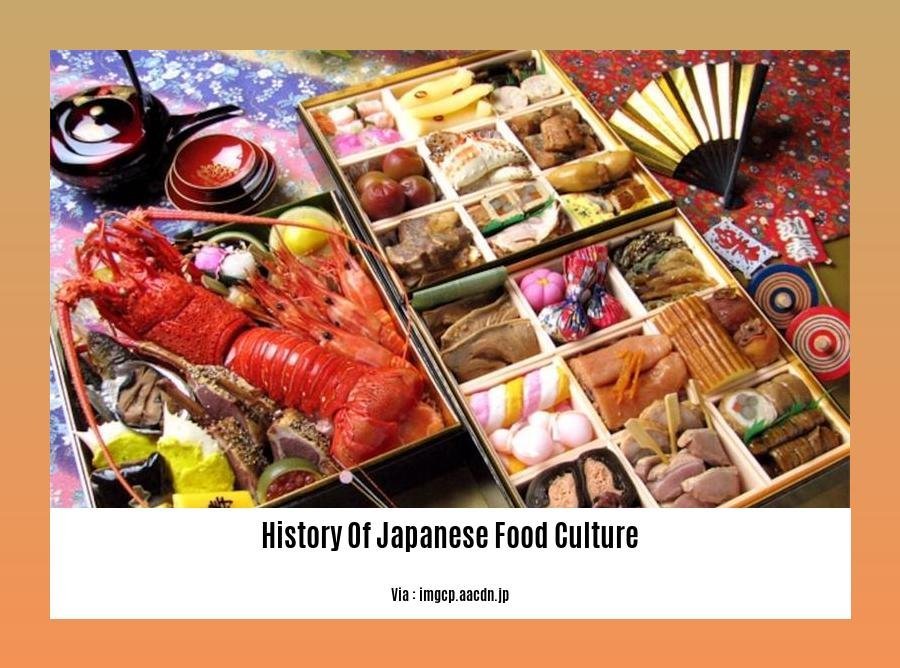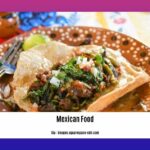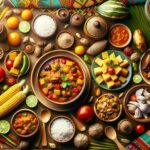Embark on a culinary journey through time in [A Culinary Journey Through Time: Unraveling the History of Japanese Food Culture]. Japanese cuisine, a harmonious blend of tradition and innovation, has captivating stories to tell. From its early roots to the refined flavors of the Heian period, the diverse influences of the Sengoku Jidai, and the transformations of the Edo and Meiji eras, let’s explore the fascinating history that has shaped Japan’s distinctive food culture.
Key Takeaways:
Japanese food culture has evolved from nomadic hunter-gatherer diets to sedentary lifestyles with the mastery of agriculture and cooking.
In the Jōmon era, Japanese people relied heavily on hunting and gathering for sustenance.
The introduction of wet rice cultivation from China during the Yayoi era led to the development of a rice-centered food culture in Japan.
The Yamato era witnessed the establishment of the Japanese imperial court and the development of a more refined cuisine.
The Nara and Heian periods were influenced by Buddhism, resulting in the adoption of vegetarian dishes.
The Feudal period brought political and social upheaval, which also impacted Japanese cuisine.
The Edo era was a time of peace and prosperity, during which many new dishes and ingredients were developed.
History of Japanese Food Culture
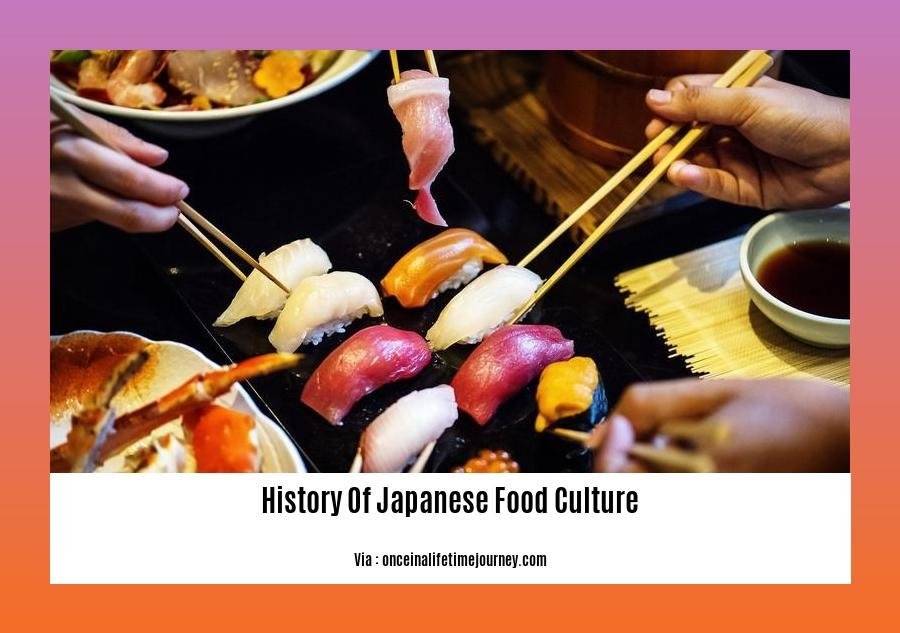
From humble beginnings as nomadic hunter-gatherers to masters of agriculture and culinary artistry, Japan’s food culture has undergone a fascinating evolution. Let’s embark on a journey through time to uncover the rich tapestry of flavors and traditions that have shaped Japanese cuisine into the gastronomic marvel it is today.
Ancient Roots: Jomon and Yayoi Eras
In the depths of time, during the Jomon era, the Japanese people relied on hunting and gathering for sustenance. Their diet consisted primarily of wild plants, nuts, and seafood, reflecting their close connection to the natural world.
With the advent of the Yayoi era, a transformative shift occurred. The introduction of wet rice cultivation from China marked a turning point in Japanese cuisine. Rice became a staple crop, ushering in a rice-centered food culture that would become a defining characteristic of Japanese gastronomy.
Imperial Refinement: Yamato and Nara Periods
The establishment of the Japanese imperial court during the Yamato era heralded a new era of refined cuisine. The ruling elite sought dishes that reflected their elevated status, leading to the development of more elaborate and sophisticated culinary creations.
During the Nara period, Buddhism’s influence left an indelible mark on Japanese cuisine. The adoption of vegetarian Buddhist principles led to the creation of shojin ryori, a style of cooking that emphasized the use of plant-based ingredients and simple, yet flavorful preparations.
Feudal Upheaval and Edo-Era Innovation
The Feudal period, marked by political and social upheaval, also impacted Japanese cuisine. The rise of warrior culture led to the popularity of hearty and portable dishes that could sustain samurai on their campaigns.
In contrast, the Edo era brought relative peace and prosperity, fostering a flourishing culinary scene. This period witnessed the development of numerous new dishes and ingredients, including sushi, tempura, and soba noodles. The rise of the merchant class also led to the emergence of specialized restaurants and street food stalls, further diversifying Japan’s culinary landscape.
Modern Influences: Meiji Restoration and Beyond
The Meiji Restoration of 1868 marked a period of rapid modernization and Westernization in Japan. This had a profound impact on Japanese cuisine, as new ingredients and cooking techniques were introduced from abroad.
While Japan embraced these foreign influences, it also sought to preserve its culinary heritage. Traditional Japanese dishes and cooking methods continued to be cherished and passed down through generations, ensuring that the unique flavors and traditions of Japanese cuisine would endure.
Today, Japanese cuisine stands as a testament to the country’s rich history and cultural diversity. From ancient hunter-gatherer roots to the influences of Buddhism, feudalism, and Westernization, Japanese food culture has evolved into a harmonious blend of flavors, techniques, and traditions that continues to captivate the world.
Whether you’re a seasoned foodie or just starting to explore the world of Korean food, you won’t want to miss the fascinating story of how history of korean bbq became one of Korea’s most iconic dishes. Or, if you’re a lover of crispy, golden-brown goodness, embark on a journey through the history of korean fried chicken and discover how this culinary sensation took the world by storm.
Heian period (794-1185)
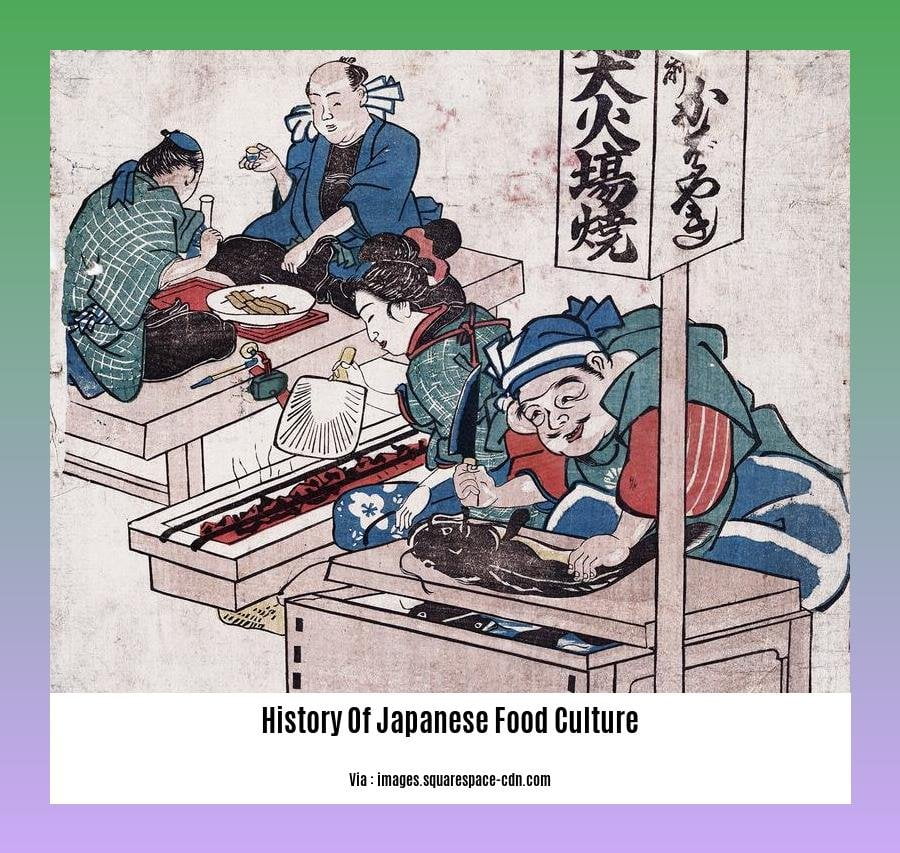
The Heian period (794-1185) marked a significant chapter in Japanese history, characterized by cultural and culinary opulence. During this era, food played a central role in Heian society, with a focus on refined court etiquette and seasonal ingredients.
Key Takeaways:
- The Heian period was known for its elaborate banquets and multi-course meals, showcasing a diverse array of dishes.
- Seasonal produce was highly valued, with ingredients like fresh vegetables, seafood, and freshwater fish featuring prominently in Heian cuisine.
- Rice remained a staple food, often paired with side dishes of vegetables, fermented foods, and occasionally, meat.
- Meat consumption was generally limited, with the upper classes being the primary consumers of animal protein.
- Fermented foods like miso and soy sauce were widely used, adding depth of flavor and umami to dishes.
- The influence of Chinese cuisine led to the introduction of new ingredients and cooking techniques, including the adoption of tea and the refinement of sake brewing.
The courtly elite of the Heian period enjoyed a varied diet that incorporated ingredients from both domestic and imported sources. Seasonal produce was highly valued, with dishes featuring fresh vegetables, seafood, and freshwater fish. Rice remained the staple food, often paired with side dishes of vegetables, fermented foods, and occasionally, meat.
Meat consumption was generally limited, with the upper classes being the primary consumers of animal protein. However, seafood was widely consumed, reflecting the importance of fresh, seasonal produce. Fermented foods like miso and soy sauce were also widely used, adding depth of flavor and umami to dishes.
The Heian period witnessed the introduction of new ingredients from China, such as tea. This beverage quickly gained popularity among the Japanese and became an integral part of courtly life. Another significant aspect of Heian cuisine was the refinement of sake brewing, with the development of techniques that produced a more flavorful and aromatic beverage.
The cuisine of the Heian period laid the foundation for many culinary practices that are still prevalent in Japanese cuisine today. The emphasis on seasonal ingredients, the appreciation of fresh produce, and the use of fermented foods continue to be defining characteristics of Japanese cuisine. Whether you’re a foodie, a history buff, or simply curious about the evolution of Japanese food culture, the Heian period offers a fascinating glimpse into the culinary heritage of this East Asian nation.
Relevant URL Sources:
Sengoku Jidai, Edo, Meiji
Key Takeaways:
- Sengoku Jidai: Political turmoil led to a rise in castle towns and a demand for portable and nutritious food.
- Edo Period: Peace and prosperity facilitated the flourishing of urban food culture, including street food and regional specialties.
- Meiji Era: Western influences brought new ingredients and cooking techniques, leading to the modernization of Japanese cuisine.
Buddhism’s impact on Japanese cuisine continued during this time, with the prohibition on meat consumption leading to the development of a rich vegetarian tradition, which would later be complemented by seafood and vegetables due to the scarcity of meat.
Sengoku Jidai (1467-1603 AD)
- The Sengoku Jidai, also known as the Warring States Era, was a time of political fragmentation and warfare in Japan.
- This period saw the rise of castle towns, which became centers of food production and consumption.
- The demand for portable and nutritious food led to the development of new dishes such as onigiri (rice balls) and okonomiyaki (savory pancakes).
- The Sengoku Jidai also saw the introduction of new ingredients from the Americas, such as sweet potatoes and pumpkins.
Edo Period (1603-1868 AD)
- The Edo Period was a time of relative peace and prosperity in Japan.
- During this time, a distinctly urban food culture emerged, with the development of street food, regional specialties, and elaborate cuisine for the wealthy.
- Popular street foods included udon noodles, soba noodles, and tempura.
- The development of regional specialties, such as sushi in Edo (modern-day Tokyo) and okonomiyaki in Osaka, reflected the diverse culinary traditions of Japan.
- The wealthy enjoyed elaborate kaiseki meals, which featured multiple courses of seasonal dishes.
Meiji Era (1868-1912 AD)
- The Meiji Era marked a period of rapid modernization in Japan.
- During this time, Japanese cuisine was influenced by Western ingredients and cooking techniques.
- New dishes such as tonkatsu (breaded and fried pork cutlet) and korokke (croquettes) were introduced.
- Western-style restaurants also became popular, serving dishes such as steak, curry, and spaghetti.
- The Meiji Era also saw the development of modern food processing techniques, which led to the creation of new products such as canned goods and instant noodles.
[Sources]
- History of Japanese Cuisine
- Japanese Cuisine: A Cultural History
FAQ
Q1: What was the staple food in ancient Japan before the 8th century?
A1: Before rice cultivation became widespread, the indigenous Jōmon people relied on acorns and plants as their primary food source.
Q2: How did the introduction of wet rice cultivation impact Japanese cuisine?
A2: The adoption of wet rice cultivation from China during the Yayoi era led to a significant shift in Japanese cuisine, with rice becoming the staple food and a central part of Japanese dietary culture.
Q3: What role did Buddhism play in shaping Japanese food habits?
A3: Buddhism, which arrived in Japan during the Nara period, influenced culinary practices by promoting the consumption of vegetarian dishes and contributing to the development of fermented foods like miso and soy sauce.
Q4: What was the significance of the Heian period in terms of Japanese cuisine?
A4: The Heian period (794-1185) witnessed a refined and elaborate court cuisine, with a focus on seasonal ingredients, exquisite presentation, and the incorporation of new ingredients from China, such as tea.
Q5: How did the Sengoku Jidai, Edo, and Meiji periods influence Japanese food culture?
A5: During the Sengoku Jidai, regional cuisines flourished due to political fragmentation, while the Edo period saw the rise of popular dishes like sushi and ramen. The Meiji period marked the introduction of Western ingredients and cooking techniques, leading to the development of fusion dishes and new culinary trends.
- Sept 31 Myth: Unveiling Calendar Secrets - March 18, 2025
- How Long & Till December 18, 2025: Accurate Countdown Guide - March 18, 2025
- Discover Japanese Artists: A Complete History - March 18, 2025
